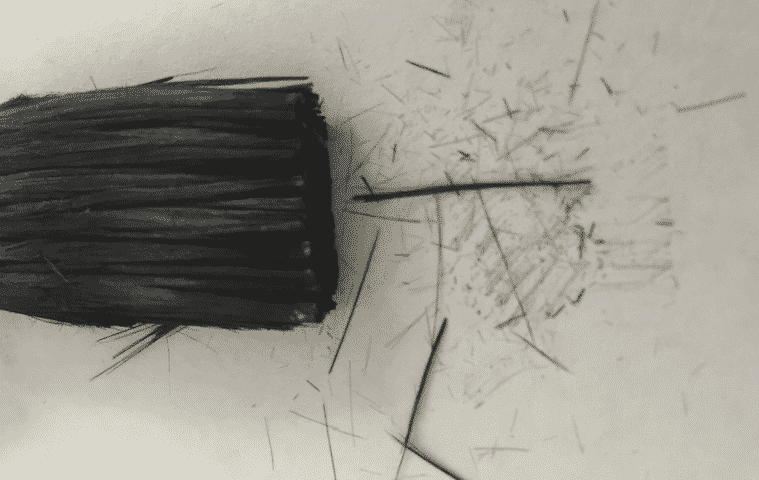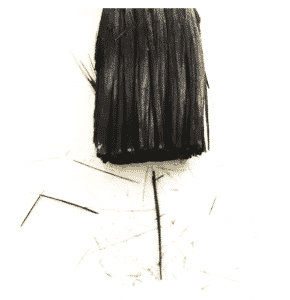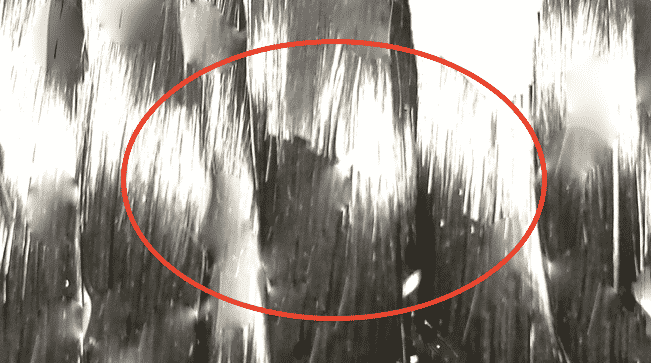
Thermal Space Receives USPTO Trademark Registration for Thermal LyNX®
May 9, 2017
Graphite Fiber Thermal Straps: Risky and Obsolete – Part 2
October 21, 2017Graphite Fiber Thermal Straps: Risky and Obsolete – Part 1
Background
This post is based on an article written by the engineers who were the first to develop and validate graphite (or carbon) fiber thermal straps for thermal management applications in several domestic and foreign aerospace programs.
That Was Then…..
Graphite or carbon fiber thermal straps have been used for thermal management is several aerospace programs; however, there have always been legitimate concerns, most having to do with the challenging mechanical properties and the high-level contamination threat that the material itself poses. In this post, we discuss why graphite fiber was a relevant material for use in aerospace thermal straps in the past and why it no longer offers a prudent solution since far superior high-thermal conductivity carbon materials have been commercialized over the past several years.
Because this is a rather involved subject matter, we have broken the post into three parts. In this first part, we cover some of the more fundamental graphite fiber thermal strap properties and limitations that can significantly compromise any system if the utmost care is not exercised. Part two will provide insight into perhaps lesser known aspects of graphite fiber thermal straps, such how graphite fiber stiffness can greatly depend upon the operational environment and why static and dynamic stiffness do not correlate in graphite fiber thermal straps. In part three, we summarize the risks, discuss why the technology is obsolete, and provide insight into current and future options that perform significantly better without the risks.
Thermal Strap Flight Experience
Our knowledge of the subject matter comes from nearly thirty-years direct engineering experience with thermal components and systems, including many different types and configurations of thermal straps. TSL engineers were the first to “qualify” graphite fiber thermal straps for use in domestic (NASA) and foreign (JAXA) space-flight programs. As a reference, one of the few articles in the open literature regarding graphite fiber thermal straps can be viewed here; it was written by Thermal Space Ltd. co-founders Steve Nieczkoski and Ed Myers. This publication pertains to a series of graphite fiber thermal straps that were fabricated, tested, and integrated with the NASA/JAXA Soft X-ray Spectrometer (SXS) system; it was published in “Advances in Cryogenic Engineering” in 2014. Although these thermal straps were launched into space, the satellite was lost shortly after due to an attitude control system failure. In fact, there is no available orbital performance data for graphite fiber thermal straps in space.
Risk vs Reward
Because of the greatly superior thermal conductivity (on a specific weight basis) that pitch-based graphite fiber (800 W/m K) has over copper (400 W/m K) and aluminum (250 W/m K), it was a tenable material for use in the construction of thermal straps at a time when no other high-thermal conductivity (high-k) carbon materials were commercially available. Not that the properties of high-k graphite fiber have changed much through the years (although there has been some attrition in manufactures), but there was a point in time when specific aerospace programs were willing to accept significant risk to save critical mass when moving heat. As is frequently the case, risk tolerance became more bearable when a system was already mature in design or hardware was built and a serious thermal issue had arisen; a prime example of how urgency can drive opportunity and innovation when risk-level is raised. Still, it did take substantial time and effort to adequately address many of the legitimate and more obvious concerns about thermal straps made from millions of individual brittle carbon fibers on the scale of 10s of microns in diameter.
Contamination – The Overriding Concern
Undoubtedly, the most egregious issue is the fracturing, fraying, and resulting foreign object debris (FOD) caused by the graphite fiber thermal straps themselves. Since the graphite fiber tows already contain a significant percentage of broken fibers right off the spool from the manufacturer, it’s impossible to prevent the creation and shedding of the fiber fragments. Coupled with handling during thermal strap fabrication, installation, and dynamic movement during launch plus any operational motion, additional free particle generation is quite prolific.
Graphite fiber thermal straps are nearly always encapsulated with either a sheath such as aluminized Mylar or a conformal dry-on coating to combat particle scatter. Either approach evolves into a slew of secondary issues. For example, with a design using a sheath configuration, a vent path must be provided to permit air to escape the enclosure during launch ascent and orbital insertion. Further, to prevent the entrainment of particles in the vent gas stream, some filtration scheme must typically be incorporated. While such measures are feasible, it’s clear that there are added complexities that are costly and must be evaluated through either analysis, testing, or both. Cleanliness is paramount in all space systems, but is especially concerning when potential sources of contaminants are located near sensitive electronics, optics, or sensors as is often the case with thermal straps.
Intrinsic Stiffness Limits Both Configuration and Performance
Stiffness is another of the primary material properties that is limiting in graphite fiber thermal straps. Graphite fiber has an elastic modulus of 935 GPa; this is more than eight times that of copper and more than twice that of hard metals such as tungsten. Limited flexibility can be a significant issue, even in applications that don’t require much movement. Graphite fiber thermal straps must be fabricated in the “as installed” (or null) configuration because there is such a limited range of motion before fiber fracturing occurs. Typically configured in an arch or u-shaped form to permit some range of motion in all axes, all graphite fiber thermal straps have a large impulse stiffness; that is the amount of force it takes to initiate movement between the strap terminals. The high impulse force is due to the relaxing and re-alignment of millions of fibers that permits the strap to take a “set” in the null position. Initial movement requires breaking the set to overcome friction and micro-surface fiber-to-fiber bonding (more on that is part 2). This impulse force will be different from the measured static stiffness because once the strap is in motion the fibers move more freely. However, the impulse force may well be the peak force imparted to the thermal strap interfaces and must be considered in mechanically sensitive applications. Most often, this dynamic force will not be measured or reported, thus creating possible over-stress and failure at force-limited interfaces.
Since the elongation-to-break in graphite fibers is extremely low at 0.4%, the amount of bending that can be tolerated is quite limited. This translates to a minimum bend radius of around ¾ of an inch in a typical graphite fiber thermal strap; bend it any tighter and fibers are going to begin to fracture. To the design engineer, this is a significant constraint in packaging the thermal strap between the interface locations. Any equipment or other components in the strap routing path must be relocated or the graphite fiber thermal strap will not fit the application. Collectively, material stiffness and bend radius constraints add length to any strap; this frequently negates some of the thermal performance benefit.
Coming Next……
Lesser known behaviors of high-thermal conductivity graphite fiber, such as how the sizing (or coating) that is applied during the final stages of the fiber manufacturing affects performance in a thermal strap and how water changes everything will be discussed in Part 2.




